How to connect a cross light switch?
Cross switch application
The installation of such a device is necessary, for example, if you need to illuminate a long room, a corridor, a tunnel, and the entrance to it can be carried out from three or more doors. At the same time, each person who comes in can, by moving his hand and pressing the switch button installed at each of their inputs, turn on the artificial light source and, after moving to another door, turn off the same lamp by another switch located near the doors to which he went out.
Thus, any other sequence is possible, but in any case, a person can control one lamp or a whole group of light sources from three places. If the tunnel has more entrances and exits, then you can install additional intermediate cross-switches and near them. The essence and performance of the lighting system will not change from this, only the number of switching devices will increase.
Design Features
Structurally, the crossover switch with one key is a compact switching device that works from mechanical stress on it. At the same time, the same touch-sensitive switching elements are also on sale, they do not have a key, but only a touch button, but the essence of the device’s operation from this remains the same. Only the mechanism of influence changes, and the contact group and principle of action remains the same. The cross-circuit breaker consists of:
- output contact terminals for connecting wires;
- fixing mechanism to the wall;
- conductive jumpers inside the case;
- Contact groups
- mechanism of action on the contact switching group.
According to the installation method, these switches are divided, like all others, into those intended for open (external) and hidden (laid inside walls) wiring. That is, the design can be of two types: invoice and built-in.
Very rarely, in exceptional cases, hybrid wiring is used, when the entire cable line is laid in a hidden way inside the walls, and the switches are installed outside, that is, overhead type.This is a special case when there is no way to make niches for cutters or their implementation is problematic.
The cross-switches look externally like regular pass-throughs and do not have a clear position on or off. Their difference is:
- Existence of four contact plugs for connection. In case there are two control keys, then the number of terminals is multiplied by two.
- Marking pairs - entry and exit.
- Inability to use separately, but only with a pair breakers.
By the way, these switches can be equipped not only with a key, but also with a rotary mechanism. In it, contact closure occurs due to a special mechanism of rotary action. The principle of operation and the number of terminals does not change. They cost a little more, as they are considered design elements of the decor, which is most often used during installation retro style wiring.
Rules for connecting an intermediate switch
Before proceeding directly to the installation and connection of cross-circuit breakers, you must clearly understand the danger of electrical voltage and short circuit in circuits with incorrect switching. All work should be carried out only with the disconnected mains voltage, and also after checking that it is not present on the live parts of the cable to which the connection will take place.
In order to install a cross switch you will need:
- Junction boxes, their number depends on the area where you need to implement this lighting control system. The rules here are similar with conventional wiring, that is, all wire connections are made only in junction boxes.
- Cable products, i.e. wires. Their cross section depends on the power of the light source, and the number of cores on the presence or absence of grounding on the fixtures. To connect between the switches, you will need a three-wire wire and a four-wire one, better, of course, with copper cores and with multi-colored markings.
So, by and large, the crossover light switch is the link between the two passage switches, if it comes to control from three places.
Connection diagram of a cross switch with pass-through:
I connect a three-core wire to the first junction box, two of which are phase and zero, and the third is ground. Turning the lamp on and off is controlled by breaking and switching on the phase wire necessary for this circuit. Zero connects directly to the light source.
From the first junction box (if there are several), the phase wire must be connected to the passage switch, where it is bifurcated due to the design of the device itself.
The next step is to install and connect to the cross switch the wire coming from the first pass-through switch. At this stage, it is worth considering the marking carefully and connecting it to the input of the switch, which can be indicated by the corresponding arrows.
The output of the cross switch through the mounting or junction box must be connected to the passage, here, too, must comply with the marking according to the diagram and arrows on the device. If they are wiped or illegible, it is recommended using a multimeter or dialing to find out where which terminals are, so that after installation and connection to the power supply network to be sure that the work is done correctly. Incorrect connection will lead to an emergency and short circuit, and this is fraught with fire.
The single terminal of the passage switch is also directed through the junction box to the light source. In this case, a three-wire wire is also needed from it to the lamp itself.
The video below clearly shows how to connect a cross-over switch and 2 pass-through switches:
Features of installing a two-key switch
The two-key cross or intermediate switch makes it possible to separately control two groups of luminaires or any light sources. The peculiarity of the connection scheme is that it is installed only in the scheme with passage elements, which also have two keys for switching on and off the load.
Connection scheme of an intermediate switch with two keys:
The design of the crossover switch with two keys has four inputs and four outputs, for the most part it is two single-key switching devices in one housing. Therefore, the choice of conductor cross-section and installation principles are identical. It should be noted that such devices are used very rarely, most often users need to light up long corridors or stairs and control one lamp or one group of lighting devices, and for this it is enough 1 cross and 2 passage switches equipped with one single key.
Four-seat control scheme
This control circuit does not have large features, except that the cross-over switches should be intermediate and installed in series with each other, between passage elements for switching on the lighting.
Wiring diagram for two cross switches:
It should be noted that all of the above schemes work equally with any type of lamp, and the ground wire is an element of human protection in the event of insulation breakdown. Junction Boxes it must be carried out according to the relevant rules, the main thing in this is its reliability and durability without oxidation and poor contact.
We also recommend that you watch the video, which clearly shows the connection diagram of two cross-switches with two-gang switch-throughs:
Now you know how to connect the cross-over switch to the walk-through. We hope that the provided installation diagrams and video tutorials have helped you figure out the correct wiring!
It will be interesting to read:

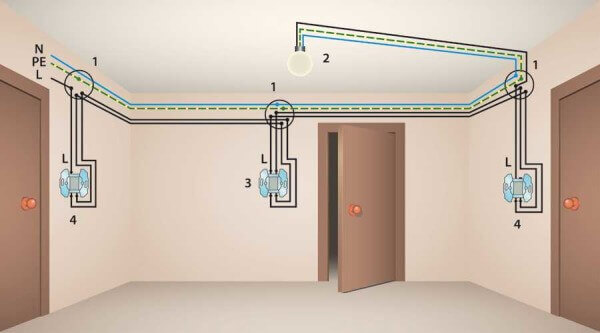
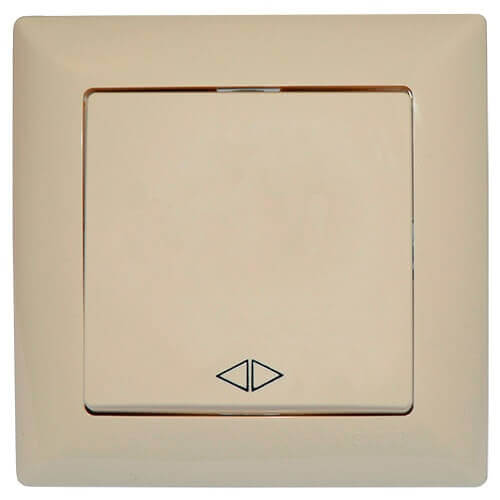
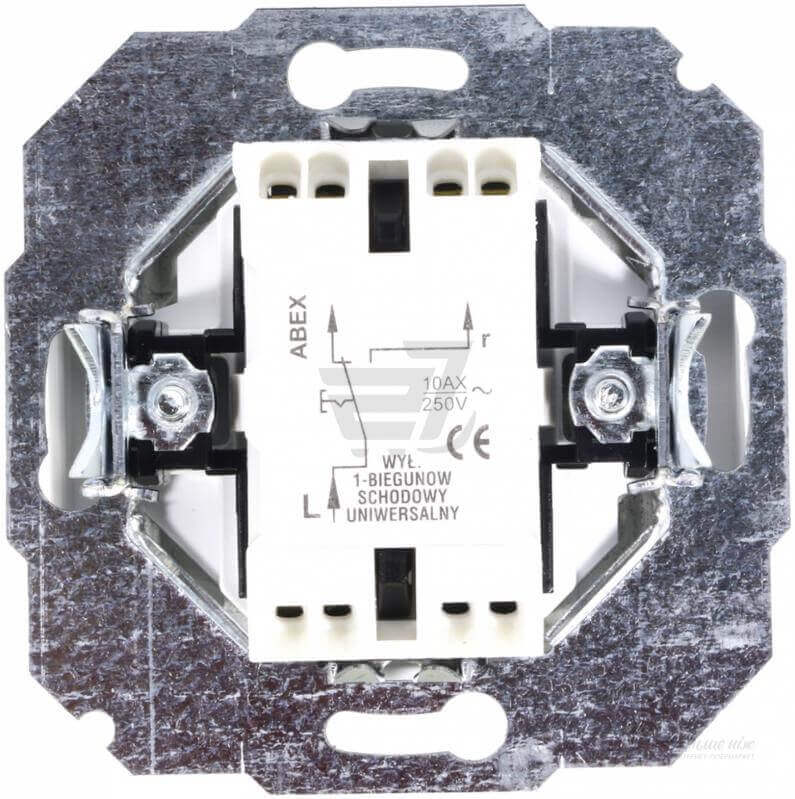
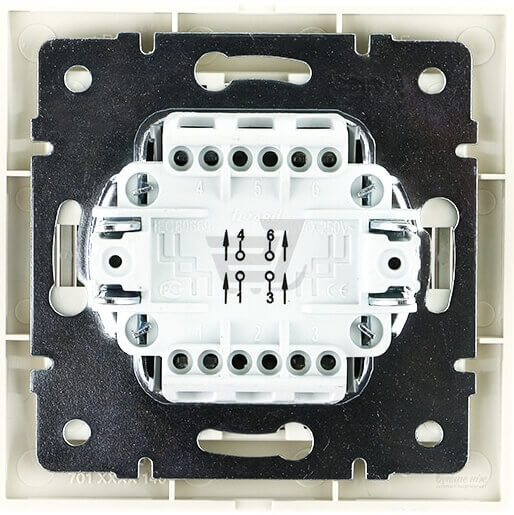
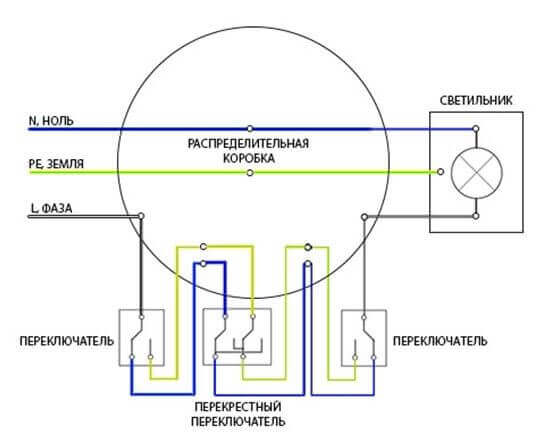
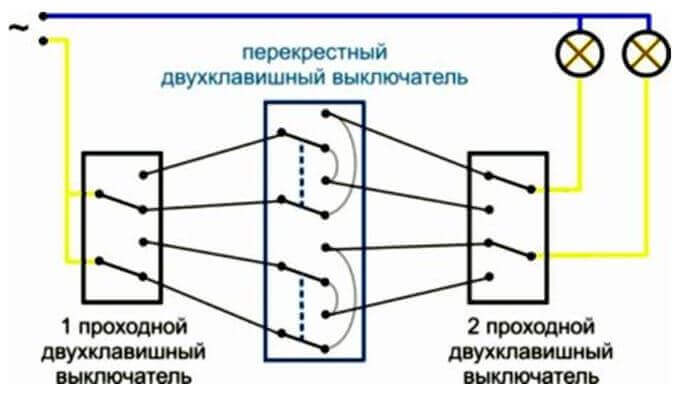
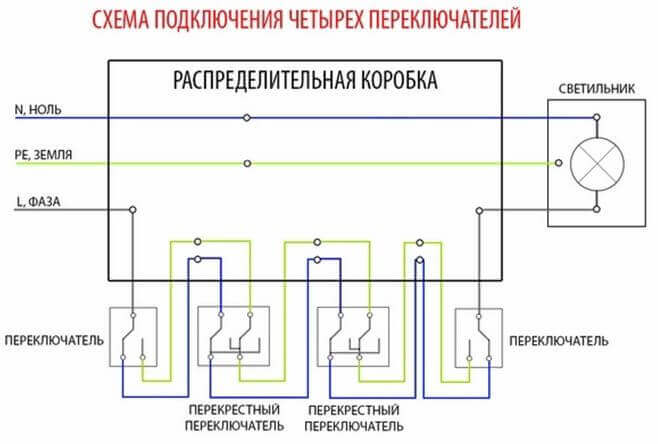



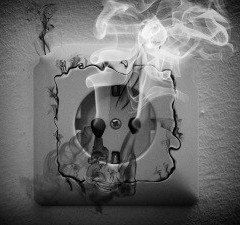
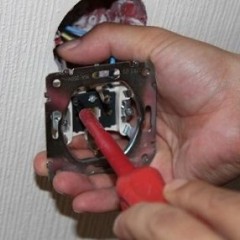


Good evening!
These recommendations are certainly instructive, but there are inaccuracies about which ordinary viewers of this material do not know and will make the installation according to what they saw.
The most important thing that the author did not mention was that these works should be carried out by a qualified specialist (who knows GOST, SNiP and PUE during installation works), maybe then there will be less work for the Ministry of Emergencies and regrets about what happened.
All good health and long life.
Question. Is it possible to use a two-key intermediate switch as a switch to which two phases must be brought ????